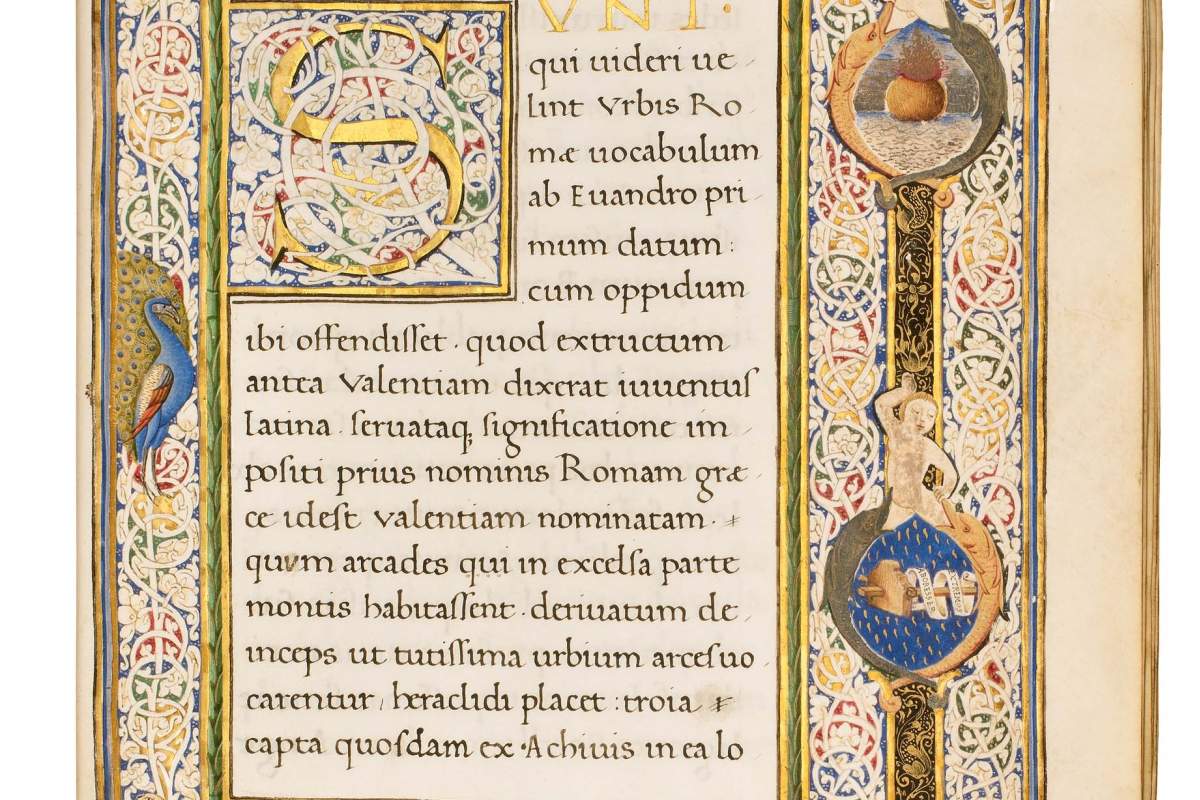
Not being able to travel, since borders are closed and strict rules on social distancing apply, may not hurt bibliophiles as much as others. The more so, since we know that books allow us to travel while staying safely at home, each and every day. Relaxing in a comfortable chair, we can take a book in our hands, and soon we are transported into off-road adventures. With our medieval manuscripts we can be spirited away in an instant. In this series of blog posts, we will share some exciting journeys.
In uncertain times, few spaces feel more comforting than one's own library, especially when rearranging the bookshelves, glancing through old friends that become new friends again. In fact, books are the most resilient and resourceful objects, providing a swift boost to one's mood. They form no obstacle when observing social distancing and provide an incredible service for those in isolation. In a series of blog posts, I will take Dr. Jörn Günther Rare Books' fine manuscript of the Collectanea rerum mirabilium or Polyhistor by the 3rd century geographer Gaius Iulius Solinus as a point of departure: with Solinus we will embark on journeys and come home safely again.

Ferdinand with his coat of arms, as Knight of the Order of the Golden Fleece, 1473.
The Hague, Royal Library, ms. 76E10, f. 74r
This stunning manuscript of the Collectanea of 'memorable things' by the late Roman author Solinus was written and illuminated in Naples, c. 1475, for Ferdinand I, King of Naples. The owner’s heraldry informs us about his identity. Born in Aragon, Ferdinand, or Ferrante, was an illegitimate son of Alfonso V of Aragon, who made him heir to the Kingdom of Naples in 1458 (he reigned until 1494; Alfonso’s brother Juan II governed over the holdings in Spain).
The coat of arms in the manuscript (f. 7r) is that of Aragon and Naples. The crown of Aragon comprised the Kingdoms of Aragon, Valencia, Mallorca, Naples, and the islands of Sicily, Corsica, and Sardinia, as well as the principality of Catalonia and the counties of Roussillon and Cerdanya. Most of those travelling from Barcelona or Valencia to Naples – including knights, soldiers, merchants, clergy, artists, and others – had to pass by the Balearic Islands and Sardinia. However, captains often also stopped by landmarks along the coasts and long journeys could include multiple stopovers. The Mediterranean thus represented not only a geographic unit, but also a social space.

The Mediterranean, detail of the Atlas Catalan,
Paris, Bibliothèque Nationale de France, ms. Esp. 30, 1375
Solinus’ Collectanea or De mirabilibus mundi is mainly based on Pliny’s encyclopaedic Naturalis Historia (d. 79 AD) and Pomponius Mela’s De situ orbis (c. 43 AD). Based on these sources, Solinus created a condensed and manageable work. He was innovative, changing the presentation of geographical data from a linear mode to contextualising areas within their neighbouring regions. He also added directions, referring to north, west, east, and south. He also innovatively used, for instance, geographical names, such as ‘the Mediterranean’ (‘our sea’) and ‘the Orient’. Solinus’ work appears to represent the convergence of a linear text and a map showing areas: in fact, he seems to map Pliny's world. His book, consisting of some 55 chapters, was to become the foremost geographical resource for more than a thousand years, from the later Roman Empire through the 5th and 6th centuries, up to the beginning of the Renaissance. Many travellers' tales across the ages derive from his texts.

Tavola Strozzi, view of the city of Naples from the sea, with the Castel Nuovo where the Royal Library was housed.
Naples, Museo di San Martino, 1472
The author himself introduces his work thus:
"As far as reason would allow, this book has been designed with a view to brevity.... If you study it earnestly, you will find it is leavened with knowledge rather than veneered with a gold-leaf of eloquence.... Observations of places occupy the majority of it, and nearly all the material is connected with the same. It seemed good to me to recall, in order, the famous sites on land, and the famous features of the seas, preserving the differences in the world".
This fine, illuminated manuscript transports us to a different age and conceptual universe.
Let us rise to the challenge that each medieval manuscript offers in communicating the points of view of bygone days. We can enjoy peeking into the ideas of these authors who incite us to ask all kinds of questions. Medieval manuscripts are essential for our understanding of our roots. Or as Solinus puts it “For what can we claim as our own, since nothing has been passed over by the diligence of antiquity?”
Also have a look at part II of this series of blog posts, and at our previous blog post on this manuscript.
For Solinus' text in English, see: topostext.org/work/747.


